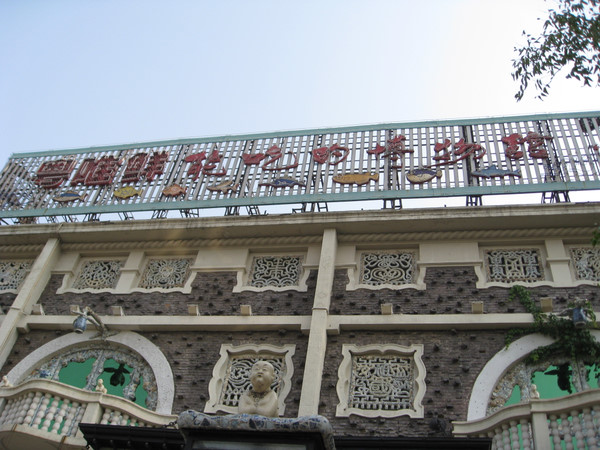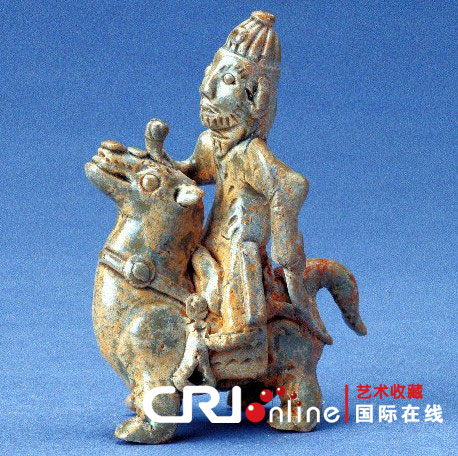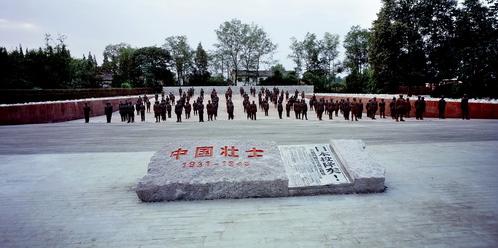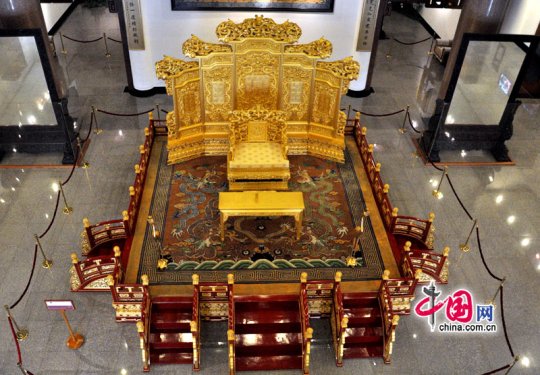 |
|
Sihai Teapot Museum [Photo/CRI Online] |
China's long history has resulted in numerous cultural relics which are held in both public and private museums throughout the country. The 10 private museums detailed in our latest list are the finest and most famous examples of their kind in China.
Some are themed and have unique characteristics, while some hold the largest collection of their kind in the country. There is no doubt that all of them enrich the cultural life of the country and even fill the blanks left by the collections held in government-owned museums.
Top 10: Sihai Teapot Museum
The museum was founded in 1987 in Shanghai by Xu Sihai, a famous teapot collector and purple clay artist. It was the China's first private museum and was established with the aim of promoting Chinese tea culture. The museum holds more than 300 teapot relics which range from the Neolithic Period to modern times, showcasing China's long and illustrious history of teapot making.
 |
|
Huayun Museum [Photo/chinadaily.com.cn] |
Top 9: Huayun Museum
Huayun Museum, Tianjin's first private museum, was dubbed "the edible museum" by the celebrated writer Feng Jicai, appropriate as it is located inside a Cantonese-style restaurant.
Zhang Lianzhi, the restaurant's boss established three museums in which he put 3,000 of his privately-owned pieces. The museums are Huayun Museum which features bronze ware, stone tablets and stone carvings; Juanzhen Museum, which focuses on the furniture of the Ming and Qing Dynasties and Guya Museum, which focuses on modern firearms.
Top 8: Bao Wanrong's Museum of Peking Opera Costumes
Bao Wanrong is a famous Peking Opera artist and collector. He studied opera with many well known artists, including Xun Huisheng, one of the four great 20th century performers of the Dan (female characters) in Beijing Opera. He has collected, designed and made more than 2,000 Peking Opera costumes, including robes, skirts, garments, trousers and amices, including the costumes of Mei Lanfang and Xun Huisheng, which promote the glorious traditional culture of Peking Opera.
Top 7: Shilong Museum
Located in Shilong Town of Dongguan City in Guangdong Province, Shilong Museum is a non-profit cultural organization which focuses the development history of Shilong Town and furniture of the Ming and Qing Dynasties. Covering an area of 800 square meters, the museum boasts 500 collections including fossils, stamps, jade articles, porcelain and pottery, as well as a variety of precious furniture from the Ming and Qing Dynasties.
 |
|
Xi Bao Lou Celadon Museum [Photo/CRI Online] |
Top 6: Xi Bao Lou Celadon Museum
Located in Luohu District of Shenzhen, the museum is the biggest celadon museum in China, holding the largest and widest collection of celadon objects. Covering more than 2,000 square meters, the museum boasts more than 1,000 objects and more than 2,000 ceramic chips from famous kilns. The objects are displayed according to four different stages: Initial stage, development stage, prosperous stage and decline stage. The collection spans more than 3,500 years and 20 dynasties. It is perhaps the Mecca for the study of celadon in China.
 |
|
Jianchuan Museum Cluster [Photo/scnews.newssc.org] |
Top 5: Jianchuan Museum Cluster
Located in Dayi County of Chengdu City, it is the largest museum cluster in China. Its 25 museums and two theme squares were designed by famous domestic and international architects. Featuring more than 10 million cultural relics, the cluster boasts 121 class-one national treasures -- China's highest ranking in terms of rarity and importance, making it one of China's foremost private museums. It features the precious Anti-Japanese War relics, a Wenchuan Earthquake exhibition and various cultural relics such as brush pot hall, three-inch "golden lotuses" (women's bound feet in the feudal age) hall and a 100 year-old photo hall.
Top 4: Museum of Ancient Pottery Civilization
The museum is located near the Beijing Da-Guan Garden, lending it an air or originality and tranquility to go with its decidedly antique flavor. The Museum of Ancient Pottery Civilization specializes, unsurprisingly, in pottery culture. The culture relics it preserves include more than 100 ancient painted pottery relics from the Neolithic Age and potter from the Zhou, Qin and Han Dynasties. It also holds more than 300 circular façade tiles from the Warring States period and Qin and Han Dynasties, as well as more than 1,000 lutes from the Qin and Han Dynasties. The museum also features a further 2,000 pieces of ancient pottery.
Top 3: Guanfu Museum
Guanfu Museum is an art museum founded in 1996 in Beijing by Ma Weidu. The museums main attractions are its ceramics hall, furniture hall, oil painting hall and doors and window frames. The museum focuses on cultural relics from the Ming and Qing dynasties. It also has a number of striking excellent theme exhibitions, including blue and white porcelain from the late Ming and early Qing dynasties, writing materials from ancient China, metalwork from ancient China and doors and windows from ancient China.
Top 2: Jinquan Coin Museum
Jianquan Coin Museum is the first private museum in China to focus on coins. It is also the first private museum in China to gain membership of the International Council of Museums. The first branch of the museum was established in 2002 in Xi'an, and there are now three additional branches in Beijing, Shanghai and Xiamen. Each museum has its own characteristics. For example, the Beijing branch features more than 6,000 types of coins, ranging from money cowry (shell money) from the Neolithic Age to paper money from the Republic of China era. The Xiamen branch focuses on currency which features the characteristics of southern Fujian.
 |
|
China Rosewood Museum [Photo/China.org.cn] |
Top 1: China Rosewood Museum
Chen Lihua, founder of the Fu Wah Group invested 200 million RMB in the establishment of the China Rosewood Museum, which opened in 1999. It is the largest museum in China focusing on red sandalwood artworks.
The museum has nearly 1,000 precious pieces, including furniture from the Ming and Qing dynasties. In addition, it has on display a gorgeous replica of the Palace Museum, as well as the traditional quadrangle dwellings of Beijing and memorial archway of Longquan Temple.
All of the exhibits are made of high quality imported rosewood. Visitors can also take the opportunity to watch the production process of traditional Chinese furniture and marvel at the exquisite skills on display.
